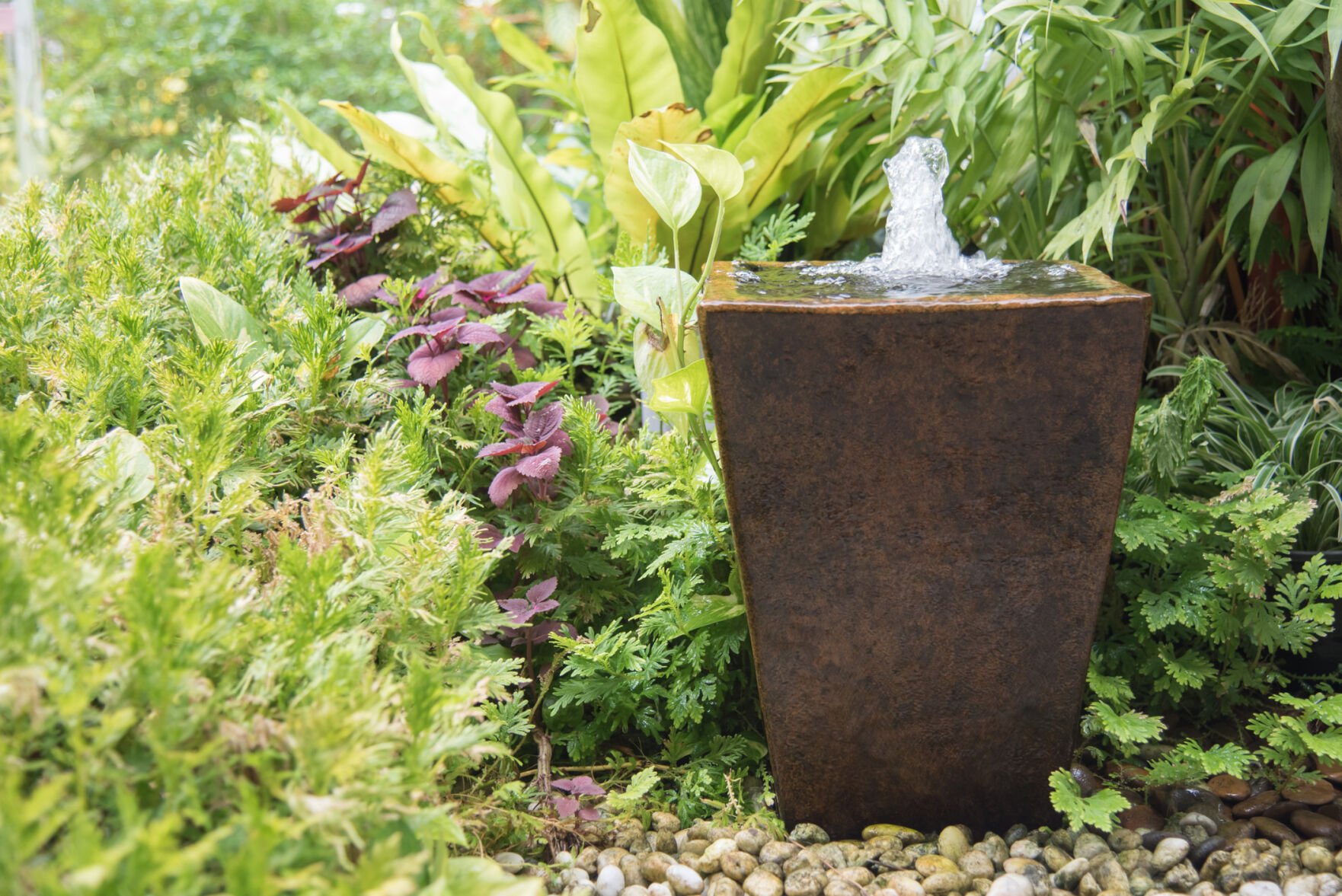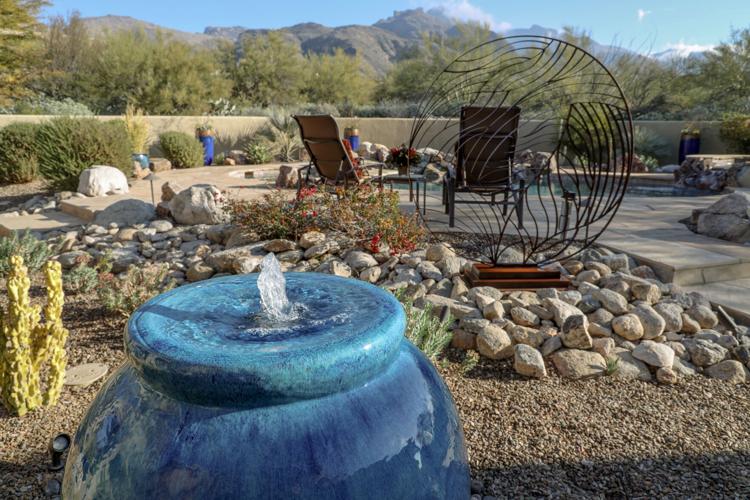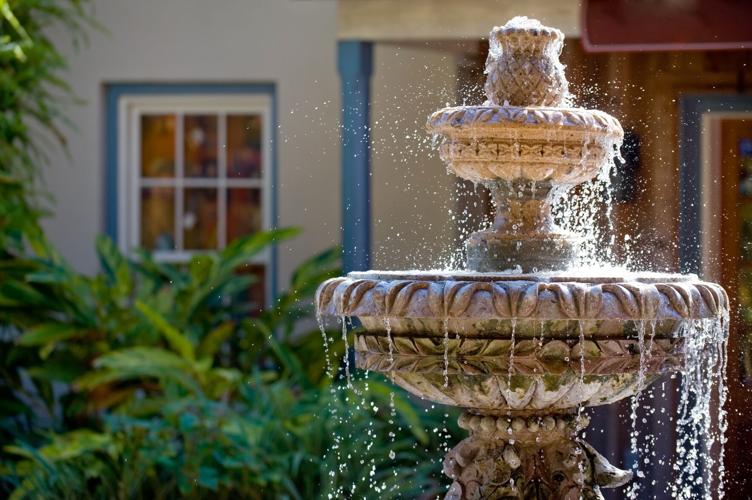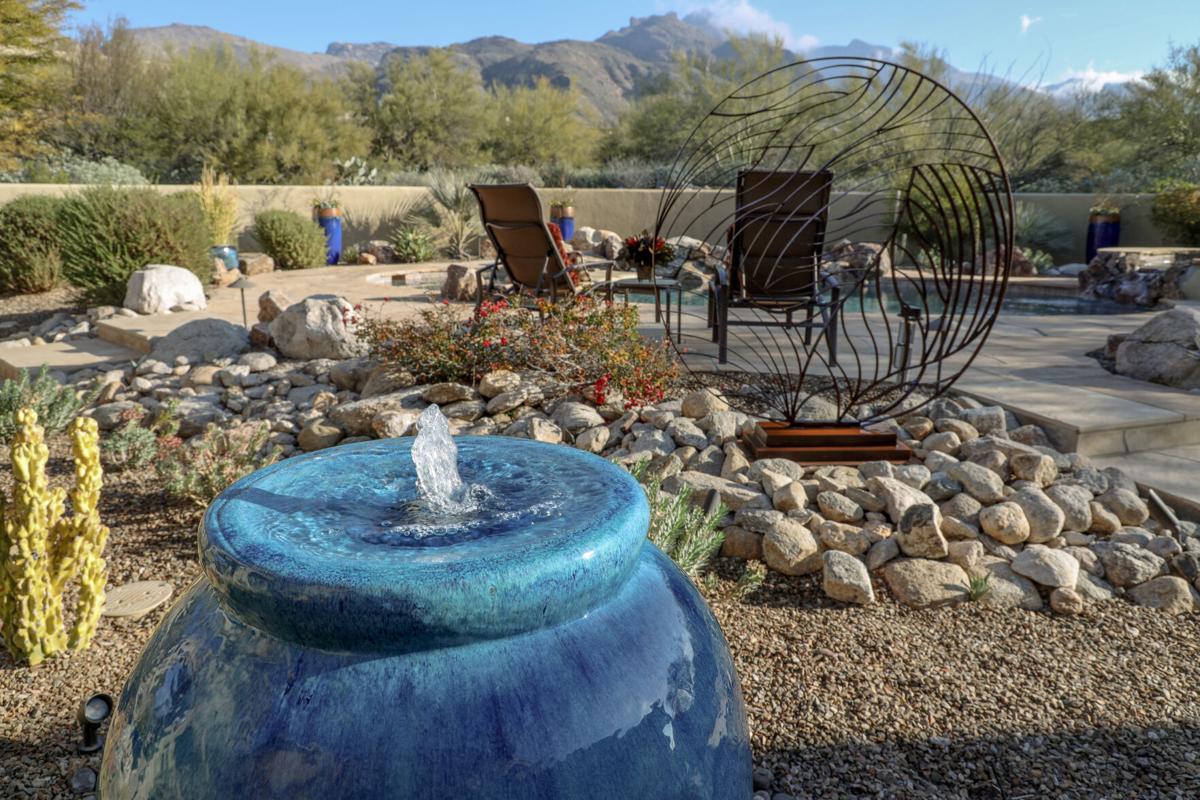Living in the desert means being used to little water in our environment. But the human need for seeing and hearing water flowing is fairly universal, and this desire has been the core of garden designs for millennia, even in desert climates.
In Middle Eastern cultures, fountains, pools and canals were an integral part of the built desert garden. Islamic gardens, in particular, used fountains and pools as a key feature, and their style likely goes back to ancient Persian gardens originating as early as 600 B.C.E.
It’s no surprise that over two millennia later, we desert dwellers still crave some water in our gardens. Flowing water creates a pleasant sound that is both relaxing and helps reduce the impact of urban noise. Water in the garden is also great for wildlife, which is increasingly under stress due to habitat destruction and rising temperatures. However, we also face an uncertain future with dwindling freshwater supplies. Is it possible to reconcile the need for water in the garden and the ethics of water conservation?

Water bubbles gently out of the top of this vase bubbler fountain, running down the sides, and into the underground reservoir, which is covered by gravel.
Fountains can be a good source of water for both people and wildlife, but in the desert there are some design caveats so that as little water is lost to evaporation as possible. First, pick a fountain with an underground water reservoir and avoid designs that have an open pool of water that evaporates quickly. Large pools not only increase water loss but their sides are a risk to small animals which can fall into the fountain pool and drown without a way out.
Bubbling fountains are a great alternative to splashing fountains, since the water gently bubbles out of one opening and flows down to a reservoir which minimizes water evaporation. If you get one of these, make sure you can adjust the water flow to minimize splashing. Splashing increases evaporation and if water splashes beyond the drainage area of the underground reservoir, you will run your water supply down very quickly.

This type of fountain will result in a lot of water lost to evaporation due to the pools of water and the splashing. If you have a fountain like this, consider putting it on a timer so it’s only on when you’re there to enjoy it.
Bubbling fountains have tubes that run up the interior and bring the water to the top of the fountain. These are much loved by birds, who perch on the tops and can bathe and drink. If the water flows down the sides of the vertical element, it can also serve as a water source for other wildlife. Lizards, deer, bobcats and other wildlife can come up to the fountain and lick water off the sides. Refilling the underground reservoir can be as easy as running small irrigation tubing into the underground reservoir so that it refills with each irrigation cycle.
The tubes inside bubbling fountains can become clogged with insect nests if left off for a long period of time. However, it’s easy to inspect your fountain and clear out any debris before switching it on. Hard water affects all types of fountains, and will eventually cause scale buildup in tubing and on tile or other surfaces. I recommend cleaning this scale off at least once a year to prevent excessive buildup. Many pond and fountain supply stores will sell special cleaners for this purpose.
Another tip to consider is turning your fountain off during the hottest part of the day and during times when you are not there to see it. You can purchase timers for your fountain so that it's only running at certain times of day — for instance when you get home from work until you go to bed. The animals in the area will soon learn the routine and visit your water source, thus allowing for excellent wildlife viewing.
A third tip for water-conscious gardeners is to fill your fountain with rainwater harvested from your roof. The water will lack any of the minerals present in our tap water, so you won’t have any problems with scale buildup. It will also be a great, chemical-free source of water for wildlife. And you won’t need to feel guilty about wasting drinking water.
Finally, you can also consider having a fountain in a shaded patio area, or even indoors. This will also minimize evaporation. Indoors, of course, it won’t provide water for wildlife, but smaller indoor fountains are great low-budget options that allow you to enjoy the sound of water in your home without worrying about cleaning and without frequent refilling.
If you think you’re ready for a fountain, here are some places around the Tucson area to shop for fountains:
- Zona Fountains, 2515 E. Fort Lowell Road. They have a large selection of varied styles, including lots of bubbler fountains.
- Stone Cactus Waterfalls, 3301 N. First Ave. Beautiful custom sculptural bubbler fountains shaped like different types of cacti. Be sure to check out their product gallery and wildlife gallery.
- Tucson Cactus and Koi, 7810 N. Oracle Road. This store has a selection of beautiful stone bubbler fountains.
- Mesquite Valley Growers, 8005 E. Speedway. A selection of fountains including tall urn-shaped bubbler fountains in bright colors.
Periods of drought are increasing throughout the country and your green friends are likely affected by it. The need to provide extra water during these dry periods is likely tempting, but then you’re not really doing your part for the environment or your wallet!






